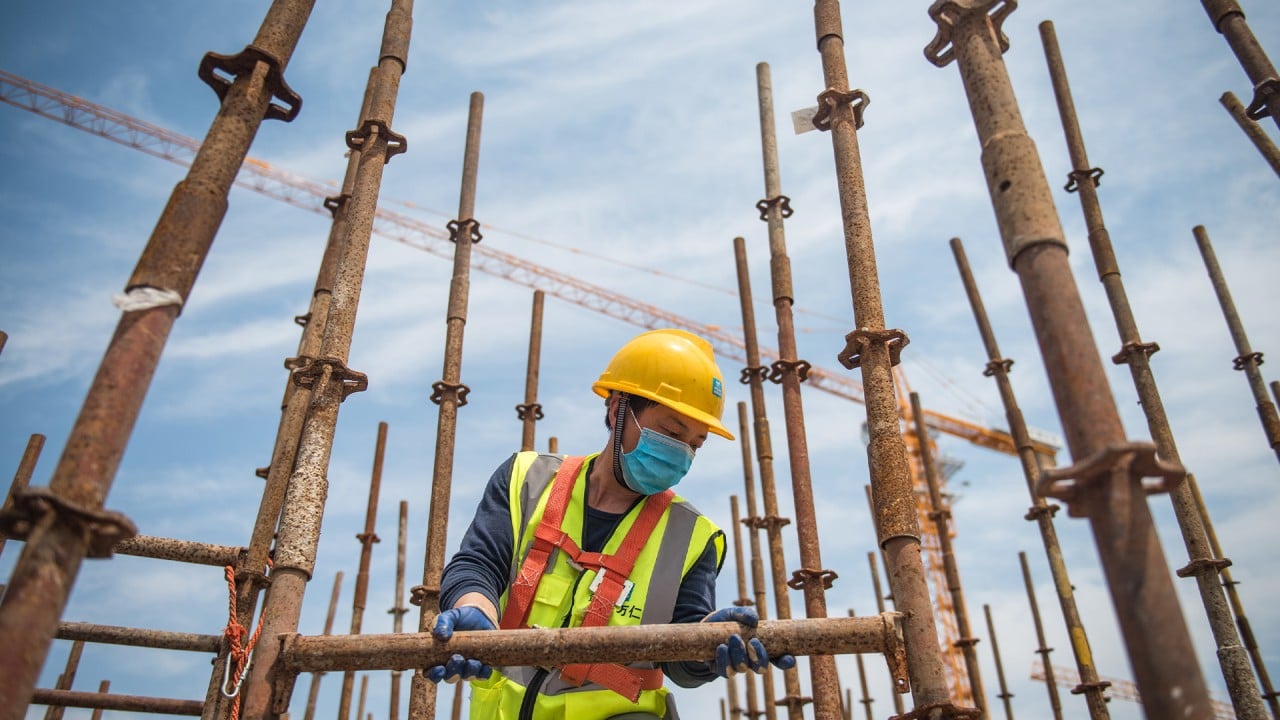
Is China’s second quarter GDP as rosy as it seems?
- Some analysts have questioned China’s official second quarter growth rate of 3.2 per cent after the economy was pummeled by the coronavirus pandemic early in the year
- Many firms are still operating below capacity, and some smaller businesses are not open at all, which observers find hard to square with output results
While there are strong signs economic activity did recover from the 6.8 per cent contraction caused by the coronavirus shock in the first quarter, the latest figures from the National Bureau of Statistics and other government agencies have reignited long-standing debate about the accuracy of Beijing’s economic data.
Derek Scissors, a resident scholar at the American Enterprises Institute in Washington, wrote on Thursday there were inconsistencies between enterprise operation surveys and reported industrial production growth.
For instance, China’s statistics agency said about 67.4 per cent of industrial enterprises were back to 80 per cent of their normal production levels as of May 27, according to a survey. Scissors said the level of operation “clashed with output results”, as government data showed that industrial output fell only 1.3 per cent in the first half of the year, with output in June alone rising 4.8 per cent from a year ago.
It’s very difficult arithmetically to generate [year-on-year] growth when a chunk of firms have gone to zero activity
Scissors said the services sector had “the same issue”. China’s Ministry of Commerce said that 10 per cent of the country’s service businesses were still closed in late June, but China reported a 1.9 per cent expansion in service output for the second quarter from a year earlier.
“It’s very difficult arithmetically to generate [year-on-year] growth when a chunk of firms have gone to zero activity,” he said.
“China didn’t grow in the second quarter,” Scissors concluded, arguing that Beijing published the 3.2 per cent growth figure because “the speed is needed to ensure Xi’s regime meets its targets”.
The second quarter growth was evidence that China is on track to achieve its social and economic development goals this year, the government said. Liu Aihua, a spokeswoman for the statistics agency, said on Thursday that China will achieve its goal of “building up a comprehensively well-off society” as the country is about to complete key targets of doubling gross domestic product (GDP) size and personal income levels over the past decade.
It is highly unlikely that the economy expanded in the second quarter on a year-on-year basis. Our tracking of the economy showed that most businesses were not operating at full strength
The rebound also adds weight to the government’s contention it was able to strike the right balance between economic development and coronavirus control when many other countries are still struggling to reopen their economies.
But not all are convinced. Trey McArver, partner at Beijing-based consultancy Trivium China, noted that the official Chinese GDP statistics are probably too good to be true.
“It is highly unlikely that the economy expanded in the second quarter on a year-on-year basis,” McArver wrote. “Our tracking of the economy showed that most businesses were not operating at full strength – especially in the services industries. So we find it very hard to see how the economy could have grown.”
Chinese government fiscal revenues fell 10.8 per cent in the first half from a year earlier and the combined revenues of China’s largest industrial conglomerates shrank 7.8 per cent in the same period – all pointing to a weaker economy than the GDP figures suggest.
Anecdotes from companies and field visits also indicate that the world’s second biggest economy could be in worse shape than the headlines figures suggest, as many exporters are struggling to survive in the country’s manufacturing heartlands due to the lingering effects of the pandemic and a sharp decline in export orders.
Entertainment businesses in China’s service sector have been particularly hard hit, with Chinese cinemas shut through most of the first half of the year after China announced lockdown measures in late January. The tourism business has also only recently started to recover.
Yan Chengpeng, an official with the National Reform and Development Commission, the nation’s top economic planner, admitted on Friday that some businesses had yet to recover when asked about the discrepancy between the upbeat macro data and the harsh reality faced by many enterprises.
“A certain number of industries have yet to completely resume normal operations and many businesses are still facing big difficulties, with some small businesses and self-employed operations struggling to survive,” Yan said.

05:02
Coronavirus backlash further fraying China’s ties to global economy
Even if the second quarter growth data is an accurate reflection of the situation on the ground, it still points to trouble down the road, as it has relied heavily on spending by local governments and state enterprises, while the recovery in consumer demand is lagging well behind production.
Nick Marro, global trade lead for The Economist Intelligence Unit, said that there was a “divide between production and demand” that could spell trouble for the future.
“This is highlighting some concerns around overcapacity, a problem that has plagued China's economy for much of the past decade,” Marro wrote in a note. “If similar dynamics continue to underpin the recovery in the second half of 2020 … then we might see some larger structural issues on the horizon, including around poor capital allocation and weak productivity.”
“That’s what they have often done in the past 40 years,” Pettis said. “But that’s not what China needs. China doesn’t need more apartments in Shenzhen or more bridges because that means more debt.”
Additional reporting by Zhou Xin

